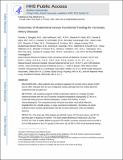| dc.contributor.author | Douglas, Pamela S. | |
| dc.contributor.author | Hoffmann, Udo | |
| dc.contributor.author | Patel, Manesh R. | |
| dc.contributor.author | Mark, Daniel B. | |
| dc.contributor.author | Al-Khalidi, Hussein R. | |
| dc.contributor.author | Cavanaugh, Brendan | |
| dc.contributor.author | Cole, Jason | |
| dc.contributor.author | Dolor, Rowena J. | |
| dc.contributor.author | Fordyce, Christopher B. | |
| dc.contributor.author | Huang, Megan Jinyu | |
| dc.contributor.author | Khan, Muhammad Akram | |
| dc.contributor.author | Kosinski, Andrzej S. | |
| dc.contributor.author | Krucoff, Mitchell W. | |
| dc.contributor.author | Malhotra, Vinay | |
| dc.contributor.author | Picard, Michael Howard | |
| dc.contributor.author | Udelson, James E. | |
| dc.contributor.author | Velazquez, Eric J. | |
| dc.contributor.author | Yow, Eric | |
| dc.contributor.author | Cooper, Lawton S. | |
| dc.contributor.author | Lee, Kerry L. | |
| dc.date.accessioned | 2016-10-19T19:10:02Z | |
| dc.date.issued | 2015 | |
| dc.identifier.citation | Douglas, Pamela S., Udo Hoffmann, Manesh R. Patel, Daniel B. Mark, Hussein R. Al-Khalidi, Brendan Cavanaugh, Jason Cole, et al. 2015. “Outcomes of Anatomical Versus Functional Testing for Coronary Artery Disease.” N Engl J Med 372 (14) (April 2): 1291–1300. doi:10.1056/nejmoa1415516. | en_US |
| dc.identifier.issn | 0028-4793 | en_US |
| dc.identifier.uri | http://nrs.harvard.edu/urn-3:HUL.InstRepos:29048899 | |
| dc.description.abstract | BACKGROUND: Many patients have symptoms suggestive of coronary artery disease (CAD) and are often evaluated with the use of diagnostic testing, although there are limited data from randomized trials to guide care. METHODS: We randomly assigned 10,003 symptomatic patients to a strategy of initial anatomical testing with the use of coronary computed tomographic angiography (CTA) or to functional testing (exercise electrocardiography, nuclear stress testing, or stress echocardiography). The composite primary end point was death, myocardial infarction, hospitalization for unstable angina, or major procedural complication. Secondary end points included invasive cardiac catheterization that did not show obstructive CAD and radiation exposure. RESULTS: The mean age of the patients was 60.8±8.3 years, 52.7% were women, and 87.7% had chest pain or dyspnea on exertion. The mean pretest likelihood of obstructive CAD was 53.3±21.4%. Over a median follow-up period of 25 months, a primary end-point event occurred in 164 of 4996 patients in the CTA group (3.3%) and in 151 of 5007 (3.0%) in the functional-testing group (adjusted hazard ratio, 1.04; 95% confidence interval, 0.83 to 1.29; P = 0.75). CTA was associated with fewer catheterizations showing no obstructive CAD than was functional testing (3.4% vs. 4.3%, P = 0.02), although more patients in the CTA group underwent catheterization within 90 days after randomization (12.2% vs. 8.1%). The median cumulative radiation exposure per patient was lower in the CTA group than in the functional-testing group (10.0 mSv vs. 11.3 mSv), but 32.6% of the patients in the functional-testing group had no exposure, so the overall exposure was higher in the CTA group (mean, 12.0 mSv vs. 10.1 mSv; P<0.001). CONCLUSIONS: In symptomatic patients with suspected CAD who required noninvasive testing, a strategy of initial CTA, as compared with functional testing, did not improve clinical outcomes over a median follow-up of 2 years. (Funded by the National Heart, Lung, and Blood Institute; PROMISE ClinicalTrials.gov number, NCT01174550.) | en_US |
| dc.language.iso | en_US | en_US |
| dc.publisher | New England Journal of Medicine (NEJM/MMS) | en_US |
| dc.relation.isversionof | doi:10.1056/NEJMoa1415516 | en_US |
| dash.license | OAP | |
| dc.title | Outcomes of Anatomical versus Functional Testing for Coronary Artery Disease | en_US |
| dc.type | Journal Article | en_US |
| dc.description.version | Accepted Manuscript | en_US |
| dc.relation.journal | New England Journal of Medicine | en_US |
| dash.depositing.author | Picard, Michael Howard | |
| dc.date.available | 2016-10-19T19:10:02Z | |
| dc.identifier.doi | 10.1056/NEJMoa1415516 | * |
| dash.authorsordered | false | |
| dash.contributor.affiliated | Huang, Megan | |
| dash.contributor.affiliated | Hoffmann, Udo | |
| dash.contributor.affiliated | Picard, Michael | |


